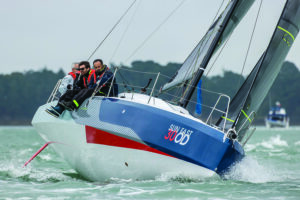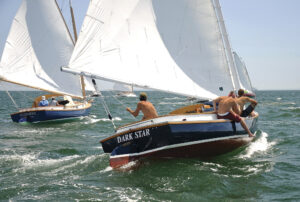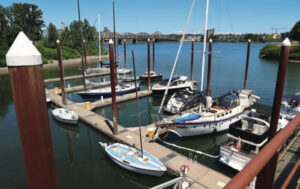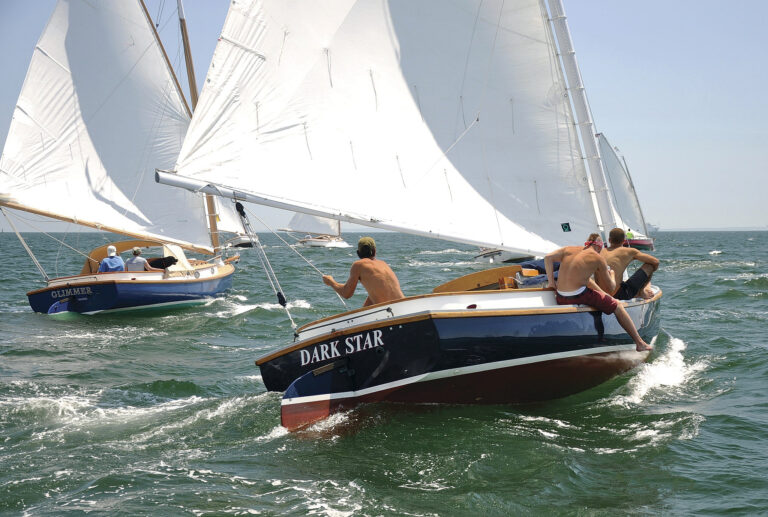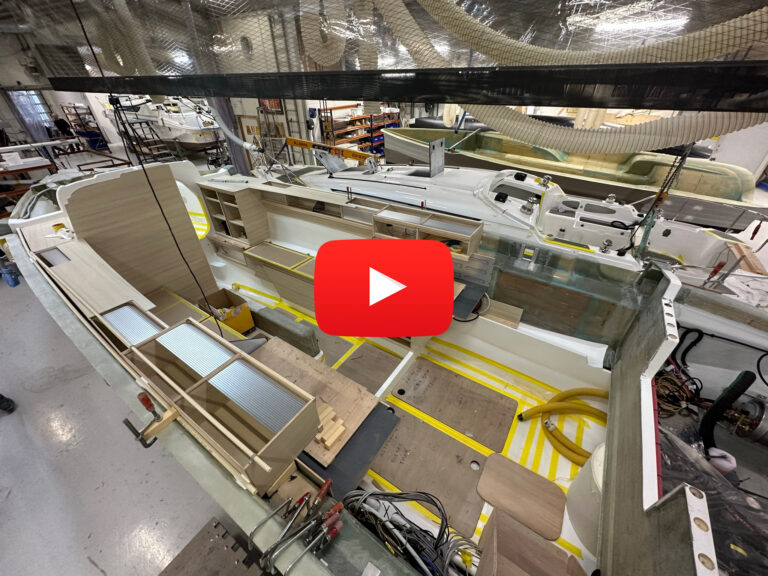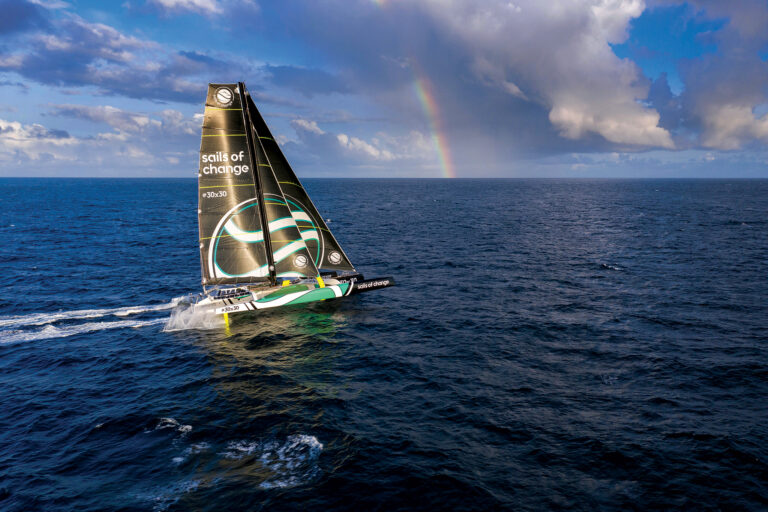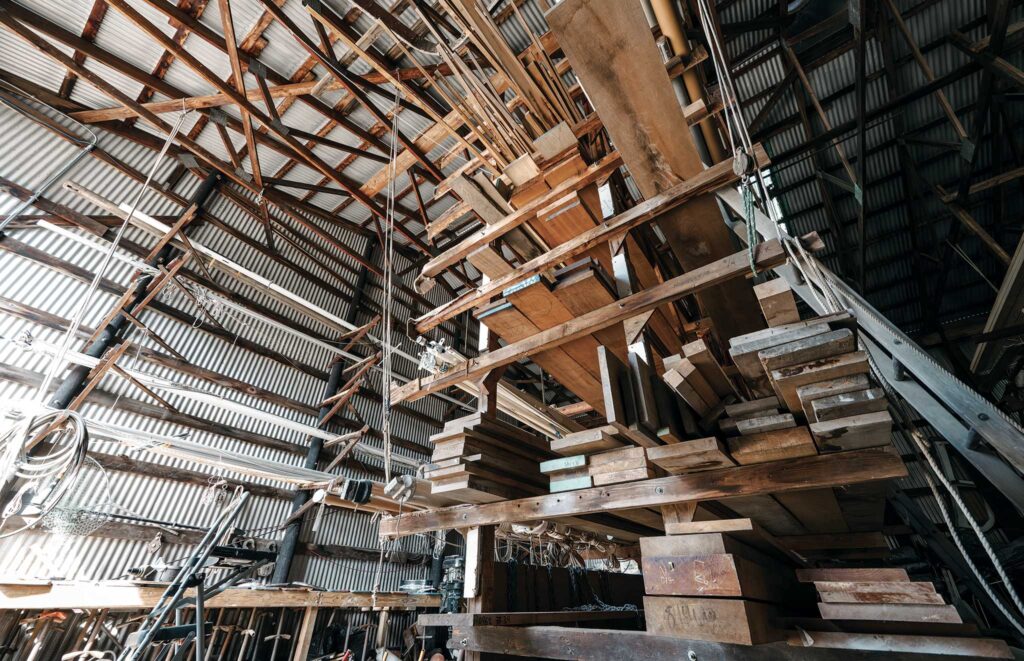Close your eyes. Imagine sanding the bare wood coaming on an older sloop or the toerail of a traditional yawl. Envision the first time you walked into the wood shop of a boatyard or boatbuilder. Do you smell those warm, rich, leathery notes? It’s a touch sweet with maybe the faintest bit of spice.
That’s teak: a wood we have all come to associate with being resilient in marine environments and beautiful enough to embellish our boats with its warm varnished glow or soft gray weathered presence.
Teak has been used in boatbuilding for thousands of years. It holds origins in India and on the border of Myanmar (formerly Burma) and Laos, and has naturally spread through South and Southeast Asia over time. With credit to its tight grain and natural oil, it’s dimensionally stable (doesn’t warp easily); strong, and highly resistant to rot and pests. It’s also a beautiful wood.
In the age of wooden ships, the western world discovered teak’s maritime value, a secret that locals had known for thousands of years. Trade extended to Europe and with time, the rest of the world. The British and Dutch colonization of Burma and Indonesia, in conquest of such natural resources, emphasized the increasing demand for teak. While fully wooden boats are less common today, teak is still used for trim accents, steering wheels, decking, and other functional parts onboard. The use of it has become tradition in the marine trades, with its appeal passed down like DNA from one generation to the next.
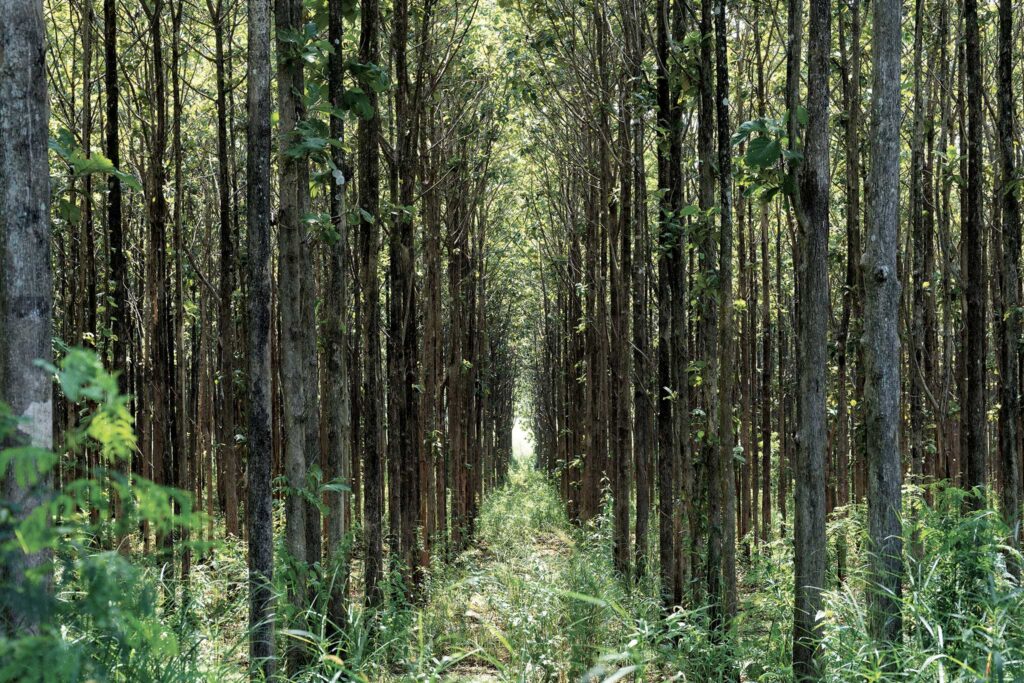
Teak is still only natural to South and Southeast Asia: just Bangladesh, India, Indonesia, Laos, Malaysia, Myanmar, Sri Lanka, and Thailand. These old-growth forests hold the large deciduous teak trees that produce fragrant white flowers and can tower near 130 feet tall. The most mature are over 200 years old, with some documented at over 1,000 years, but most are harvested at 50 to 80 years of age. In the boatbuilding industry, we know these teak trees for only the lumber that they produce: high density, tight straight grain, with a rich color and protective oils.
Over half of the world’s natural teak resources are in Myanmar. They were long the world’s leading supplier. Recent years have brought about sanctions and American and European import bans on their teak due to environmental and geopolitical concerns. Myanmar’s lush forests are being depleted at a dangerous rate, inundated with illegal logging and lacking regulation, threatening fragile ecosystems. Logging also amplifies the human rights abuses of an ongoing civil war. Since a 2021 military coup, there has been increased government control over exports and therefore incoming funds.
A supply crunch has followed, driving up prices of any available old growth product, as the marine, furniture, and construction industries battle for what is available.
The high silica content in Myanmar’s soil is critical to teak lumber exhibiting its desired properties. Combine that with the favorable tropical growing climate, with distinct wet and dry seasons, and there are few places that can equal the growing power and quality of Myanmar’s forests.
Even including neighboring stock, the finite resources of the old-growth forests cannot sustainably match today’s demand for teak lumber. Sourcing naturally grown teak for boatbuilding will be extremely limited going forward. The future of teak lies in the alternatives.
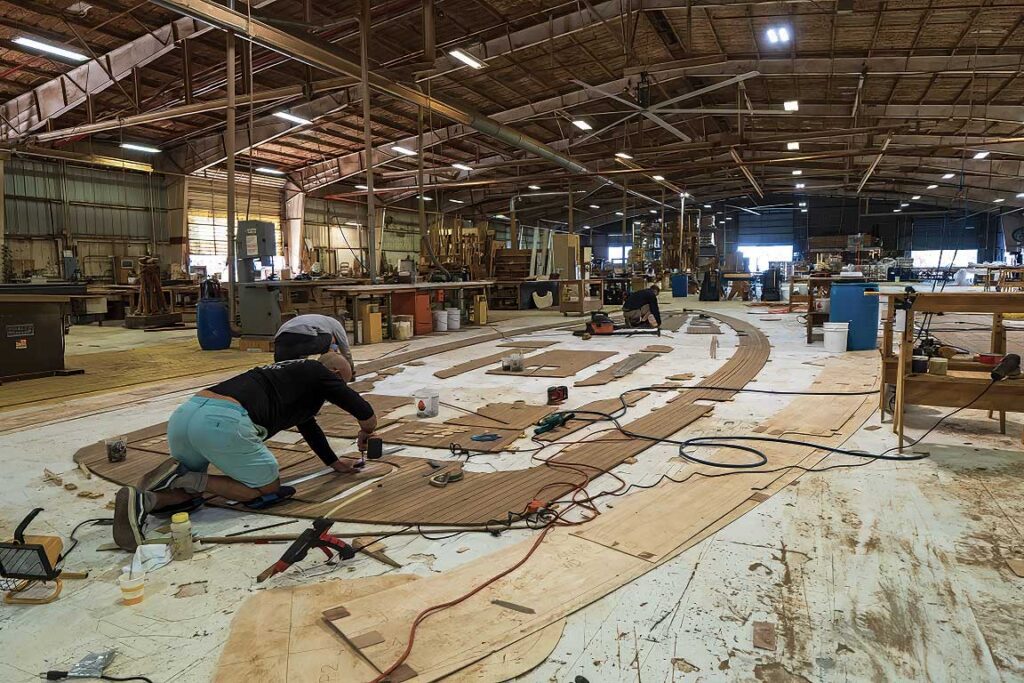
Plantation Teak
There’s a more responsible way to produce teak, and that’s through forestry management. Ecological, economic, and social principles are blended to more sustainably grow teak: new trees are planted in place of those that are harvested, and the effort positively contributes to the local economy. It’s also a process that, when done correctly, complements the restoration and conservation of natural forests.
The Forest Stewardship Council (FSC), an international non-profit, sets standards based on a core set of principles and criteria, and creates a sustainable-product market by certifying the lumber. FSC-Certified teak plantations are in parts of Central America (notably Costa Rica), South America, Africa, and Indonesia. Plantations vary in their growth cycles, from short rotations of 10-30 years to longer-term investments of 50-70 years.
One challenge is that plantation teak has a perception of lower quality. However, with proper site selection and best practices in planting and managing, that has been proven false. The Global Teak Study, compiled under IUFRO (International Union of Forest Research Organizations), with data from across the world, shows that plantation-grown teak is equivalent to natural teak in terms of density, strength, and shrinkage.
The quality is primarily dictated by the log dimensions and proportion of heartwood. However, durability is shown to increase with age (and proportion of heartwood), regardless of whether a tree was grown on a plantation or in a natural forest. Teak also harvested in longer rotations (over 50 years) tends to yield better aesthetics when milled.
Note the reference to heartwood. This is the darker and more desirable part of the tree and tends to be a golden brown. The lighter sapwood, adjacent to the bark, does not carry nearly the same durability and strength and is almost entirely avoided in boatbuilding. Plantations do also sell the sapwood, so lumber needs to be carefully specified or selected.
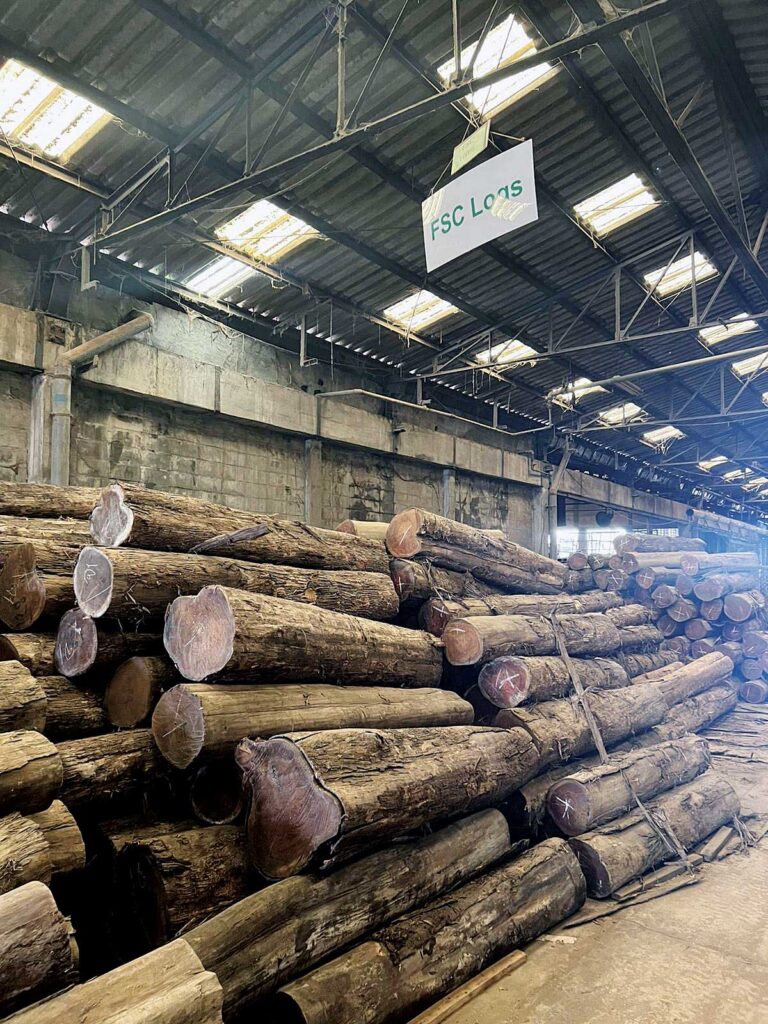
Older trees have a higher percentage of heartwood. An 8-year-old tree may only have 30%, while a 50-year-old tree will have around 90%. This means the likelihood of receiving substandard lumber from old growth trees is also lower and may be what helps propagate the plantation misconceptions.
Considering world demand, plantation teak is still a scarce commodity, but it is expanding. Science is aiding in increasing the proportion of heartwood at earlier ages through accelerated growth and allowing for shorter growth rotations. However, the durability achieved only by older growth remains an important consideration for marine use.
Integrity risks also shouldn’t be overlooked. While the intentions of FSC-Certified teak are respectable, FSC transaction verifications in recent years have indicated more certified teak purchased by manufacturers than produced by the certified forest management units: a hint that some unregulated or conflict teak may still be entering our markets.
Reclaimed
Teak may deserve a second life. Discarded boards from refit projects, pieces salvaged from boats that have hit their end of life, or used lumber from land-based applications can all be sources for reuse. Given the hardiness of teak, especially if it is well-maintained, an old piece can be cut and sanded to fit a new project onboard.
Eco Teak by EuroDesign takes another approach by reconstituting teak from teak sawdust (plantation sourced) and recycled plastic. The material is advertised as low-maintenance and durable, with good anti-slip properties.
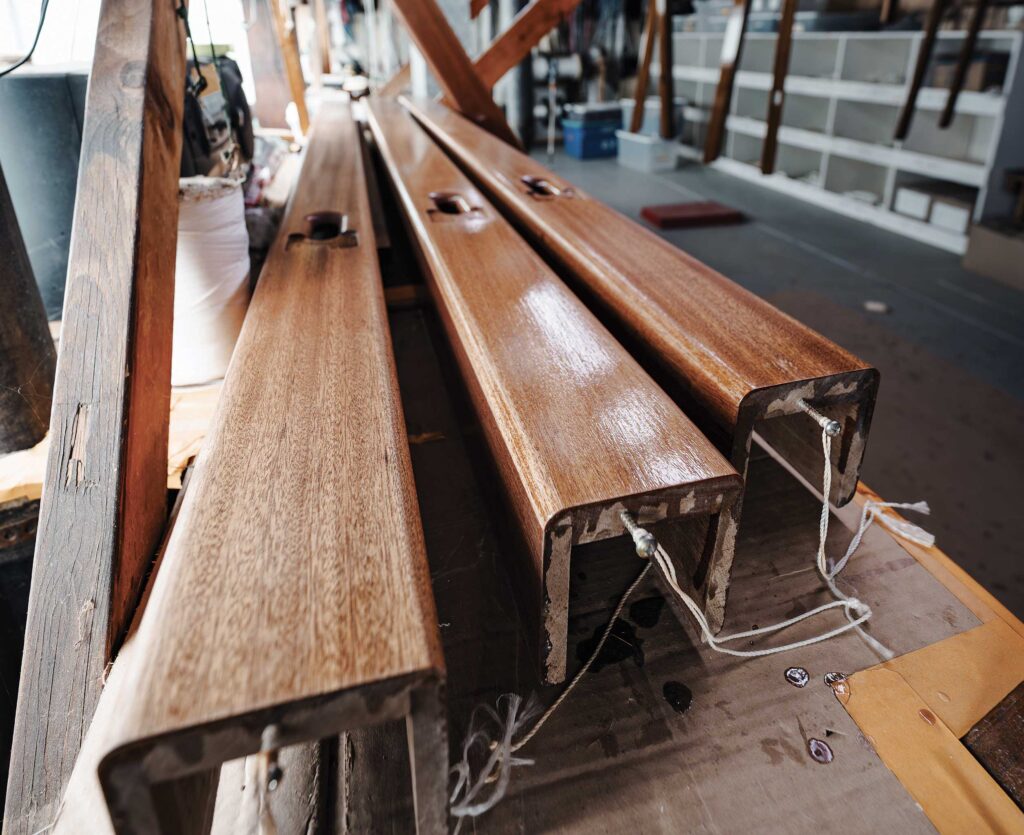
Alternative Hardwoods
Taking cues from traditional boatbuilding around the world, marine carpenters are reconnecting with species that served well for crossing oceans decades and centuries ago. Many offer similar characteristics to teak, but like anything related to a boat, also carry tradeoffs:
Sapele
With West African roots, Sapele is golden to dark reddish brown and exhibits varying grain patterns. It carries good rot resistance but only moderately deters insects. The interlocking grain can be an issue with some woodworking operations, but it’s strong, glues and finishes well, and resists warping. Among other applications, it can make a beautiful steering wheel.
Iroko
Quickly gaining popularity as a decking material, iroko is also known as African Teak: a nod to its origin in tropical regions of Central Africa. Like teak, it’s a golden yellow to medium brown, darkens over time, and weathers to gray, while also remaining resistant to rot and insects.
Early attempts of solid iroko planks as decking faced instability in color and shape, along with splintering. Instead, it is now layered and glued like a plywood and installed sideways so that the layers are visible. The layering resists warping and splintering, and provides a uniform color, with a tight grain. To help avoid a similar storyline to teak, lumber is available as FSC-Certified.
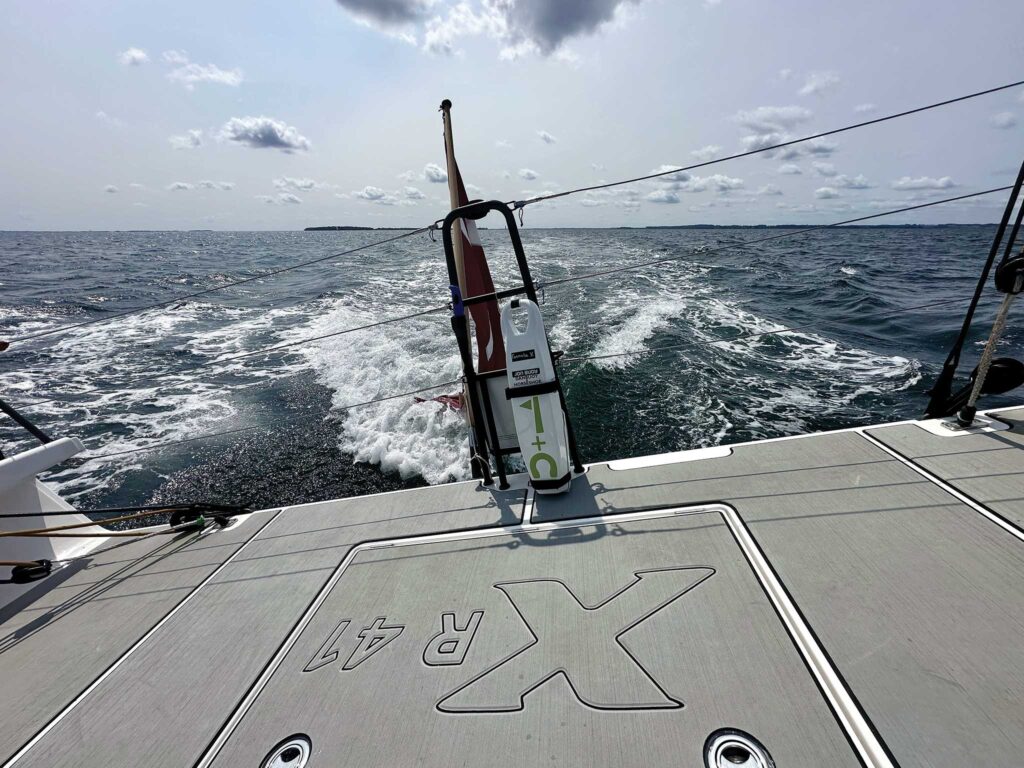
Black Locust
Black Locust is impressively strong with excellent durability. It’s also indigenous to North America. It varies in color from pale greenish yellow to darker brown and darkens with age. A straight grain is also dense and hard, making it tough on tools. Black Locust’s resistance to rot competes closely with teak. In fact, the species has been used for fence posts for that exact reason. It can be glued and finished to make a beautiful tiller or worked in on other details onboard.
Ipe
From the tropical regions of Central and South America comes a hardwood that is so dense that it sinks in water. This also means that it is difficult to work but balanced with exceptional durability and toughness against rot and pests (other than underwater marine borers). Ipe is varying shades of brown and can be glued with proper surface preparation.
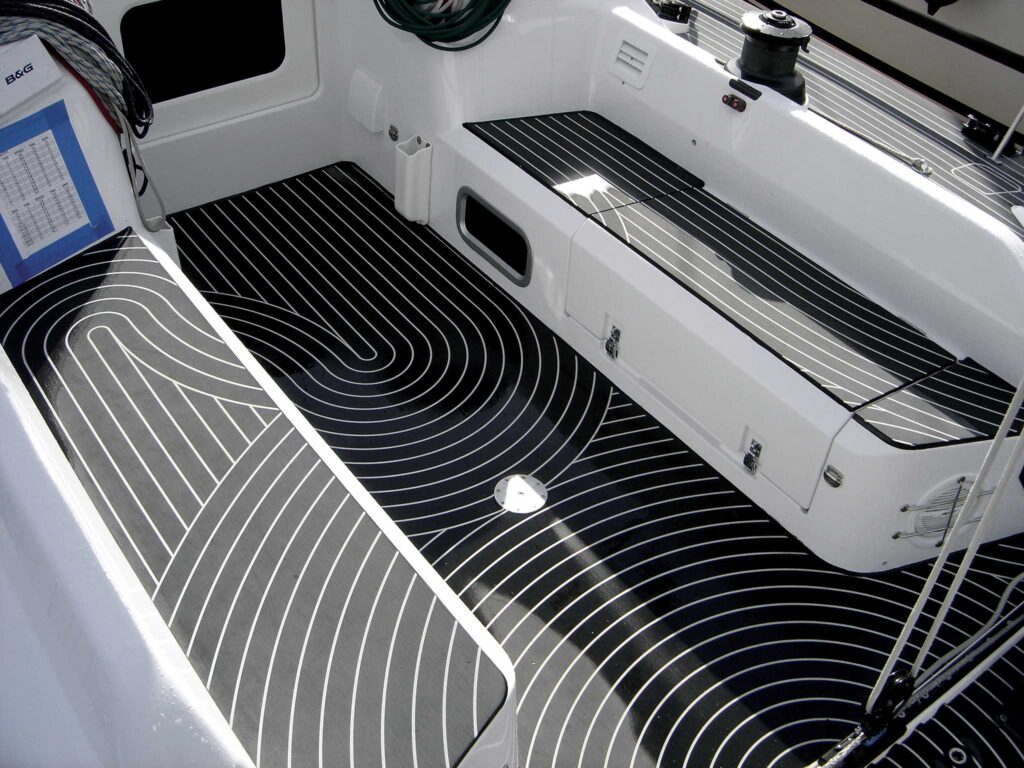
Greenheart
Greenheart is variable in color from white to yellow to brown to black, with no difference in physical properties. It weathers well, and it is very resistant to rot and insects. Like other hardwoods it’s somewhat difficult to work because of its density. It grows naturally in northern South America.
Mahogany
A more familiar species for most boat owners, mahogany is indigenous to central America and the Caribbean, as well as the nearby parts of South America and the tip of Florida. Lumber comes in various shades of brown with grain that can be straight, irregular, or wavy. The durability varies with density and depends on the growing conditions. Its heartwood is resistant to termites, but not other insects. Mahogany is generally easy to work with and finishes and glues well.
Modified Softwood
Developed from sustainable and fast-growing softwoods, like pine, a modified softwood undergoes a manufacturing process that removes moisture from the original wood, infuses it with resin, and then cures it at an elevated temperature. The result is a product that is durable, strong, and aesthetically pleasing. While this approach is still maturing, early estimates suggest lifespans that could reach 50 years. Disposal at end of life presents an issue that is similar to fiberglass boat hulls.
Cork
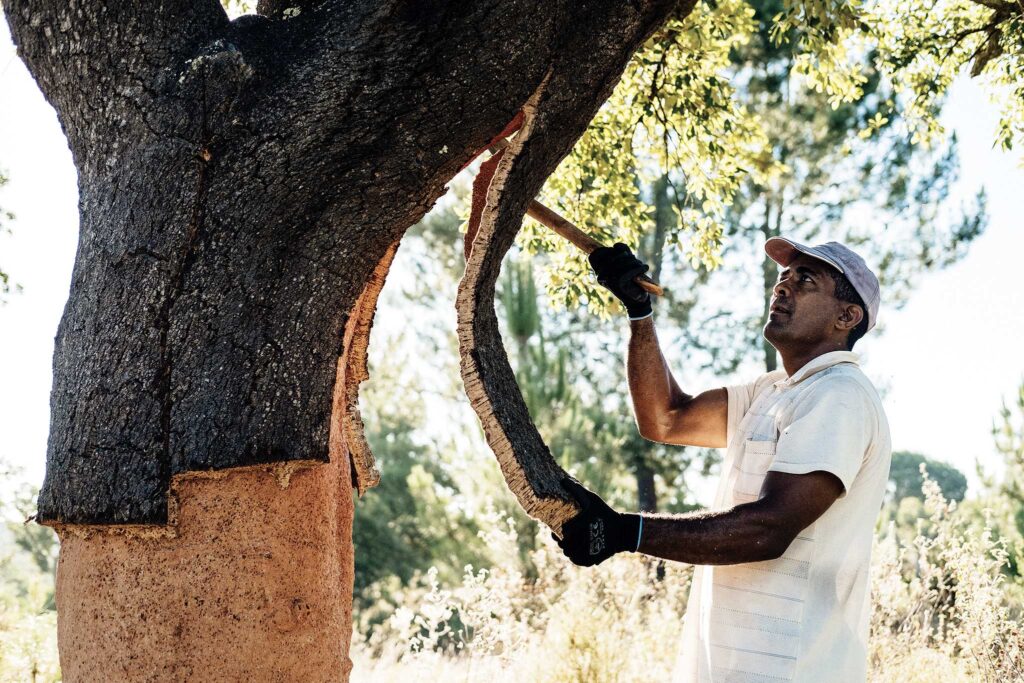
Cork decks are soft underfoot and provide excellent traction, even when wet. Cork remains relatively cool in the sun and insulates the cabin from heat and noise. It’s also one of the lightest decking options available.
This concept is hardly new; cork has been used commercially for flooring in public spaces, like court buildings, colleges, and libraries, for well over 100 years. The cork itself is also sustainable and proper harvesting doesn’t damage the cork oak trees. Harvesting involves removing the outer layer of bark and letting the tree regenerate its protective layer over a period of at least nine years. Cork boat decking often uses high-quality ground scraps from wine cork manufacturing, making it a recycled material on top of that. The cork granules are combined with a synthetic binder and molded under pressure and heat to form the final product.
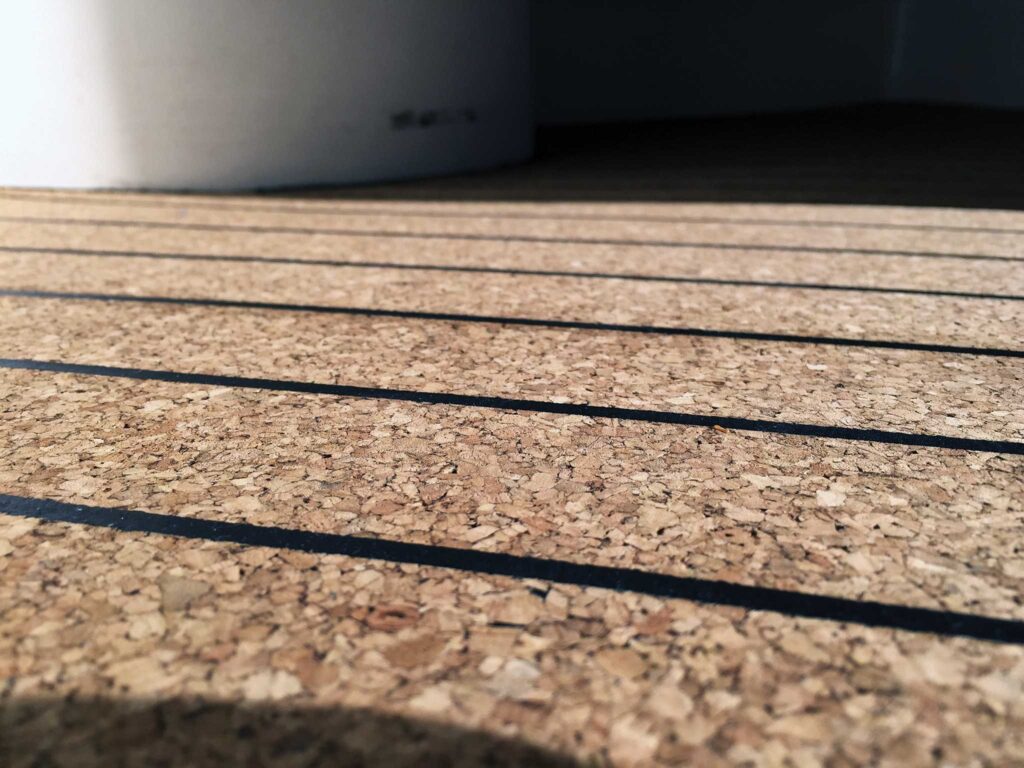
Durability is often questioned with cork decks, but experience suggests a lifespan of 30 years or more. To achieve that timeframe, it’s advisable not to drag anchors across the deck or place heavy items down without good weight distribution. Aggressive solvents, fuel, and bleach can also damage cork decking.
The use of cork can extend below deck with cabin soles, table inlays, sound reduction for engine compartments, and accent trim. While cork has limited structural capabilities, it works well when mated with other materials, such as composites or wood.
Available products include Seacork, Marinedeck 2000, Navicork, AquaCork, and Oceancork.
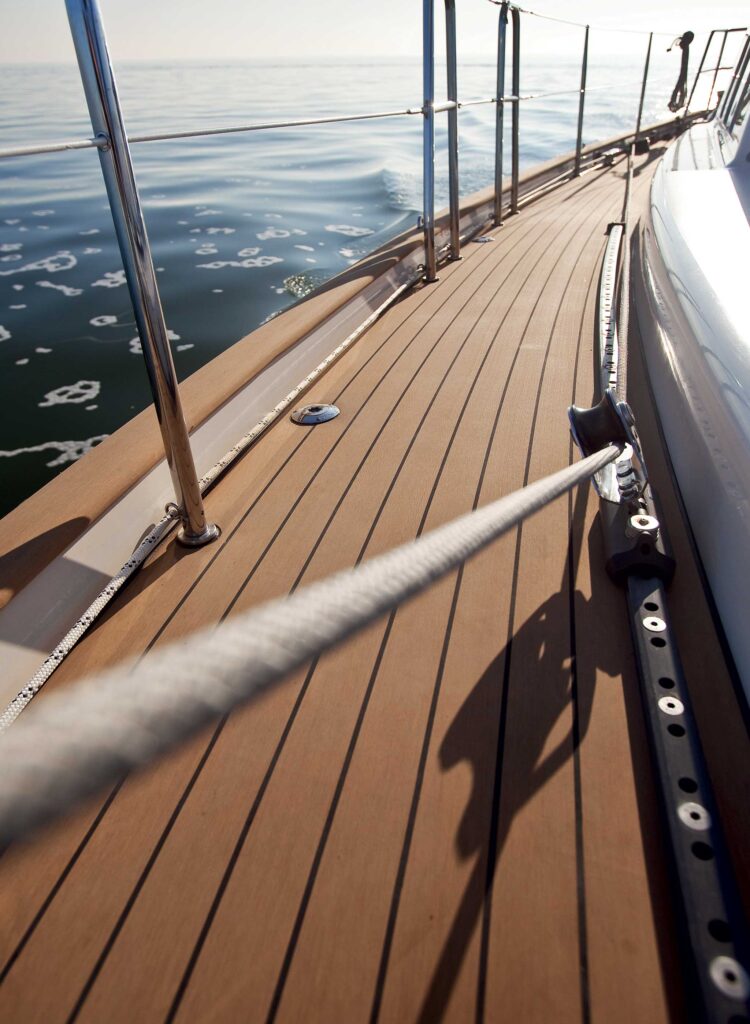
Synthetics
While the geopolitical and environmental merits from another non-renewable resource are questionable, petroleum-based synthetics do present an alternative to teak. Some have recycled content or incorporate bio-based components to lessen the impact. A couple teak substitutes already presented contain a level of these synthetics too, in the form of binders. Tradeoffs continue to be a theme:
• PVC
Polyvinyl Chloride (PVC) synthetic decking is simple to maintain and the most popular of the synthetic decking options. It resists wear and can even be lightly sanded to remove aesthetic damage. A range of colors are available to mimic new to weathered teak, and most brands even offer different caulking colors as an option.
PVC tends to get hot in the sun, especially darker colors, but Flexiteek (and sister-brand Isiteek) has a patented design that incorporates microballoons, both making their synthetic decking faster to cool and lighter for equal thickness. They also use a bio-attributed PVC to reduce their environmental impact. Permateek, PlasDeck, Tek-Dek, Nuteak, and Isoteak offer alternative PVC products that are solid PVC. Evo Decking is another option that offers the most realistic look.
Maintenance is limited to washing with soap and water (hot if trying to remove sunscreen), although harsh chemicals should be cleaned off immediately to avoid staining. Despite this ease of use, PVC tends to provide less grip than traditional teak. However, advances are being made to improve upon that, such as the high grain option by Permateek. Quality PVC products are expected to last 20 years, with some existing installations already exceeding that.
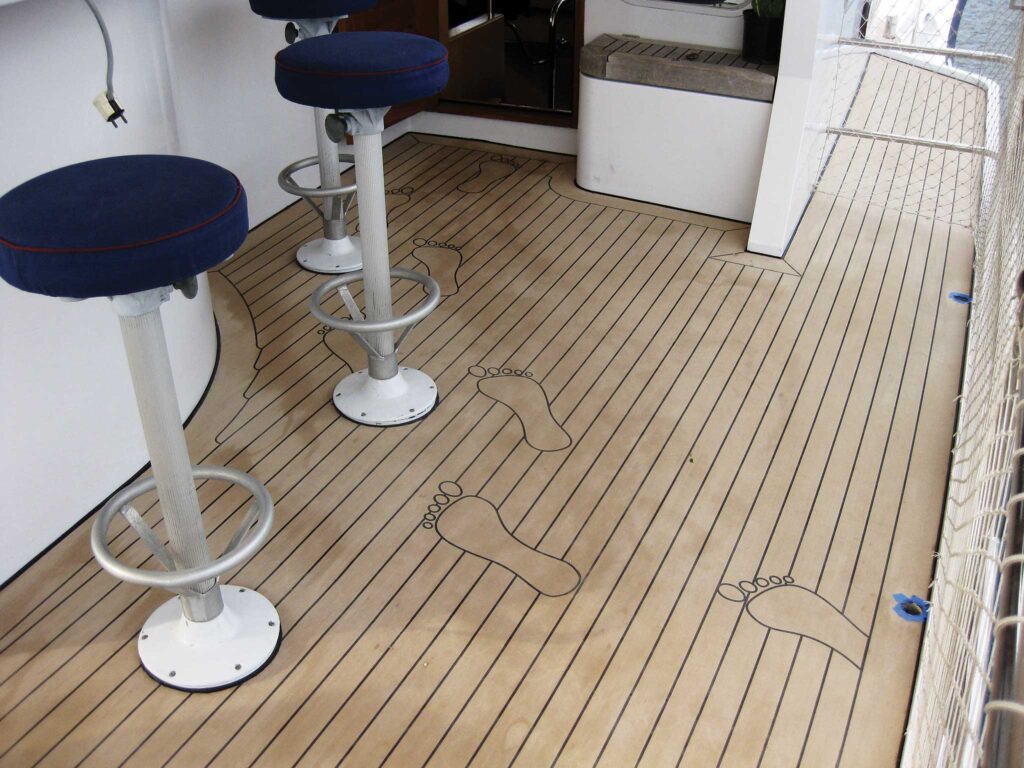
• Polyurethane
Polyurethane decking solutions offer excellent UV-resistance and high strength. They can easily be secured over simple curves. And, the inherent material flexibility, not requiring plasticizers (like PVC), means polyurethane decking will not become brittle over time. Low maintenance and a 20-year life expectancy are complemented by the possibility of it being recycled at the end of its life.
EcoDeck, Herculan, and TDS CompositeDeck are polyurethane products available, and, like the other synthetics mentioned, at a cost savings when compared to teak deck installations.
• Expanded Foam
This choice is especially popular in the racing world. Closed-cell PE/EVA (polyethylene/ethylene-vinyl acetate) foam decks are waterproof and have great grip, wet or dry. They’re comfortable when sitting or standing for extended periods and absorb the shock of rough conditions. Custom designs add to the intrigue, but it is certainly a departure from teak and doesn’t try too hard to look the part. SeaDek is a popular option in this category and offers a three-year warranty, but these decks typically carry a 5-7 year life expectancy, or longer for light use and more limited UV-exposure.

• Composite
Esthec, a Dutch Company, delivers a unique composite solution. Their decking is a patented thermoset blend of 25 ingredients that include natural fibers, biobased resins, minerals, and color pigments. It doesn’t contain PVC or wood and is composed of 25% recycled materials. The result is a durable material that resists warping and fading and is highly durable due to viscous elastic properties. The material properties of Esthec and surface profile provide excellent grip and is resistant to most oils and grease.
Boatbuilding has evolved over time and will continue to do so. Advances in materials create opportunities for developments in comfort and performance. And change through design can alter the requirement for materials. Sailing is a tactile experience, and materials will always be at the center of the design and build deliberations.
Close your eyes again. Imagine 10 knots of breeze, a close-hauled course, and an open ocean ahead. What do you feel underneath your feet as you walk towards the bow? What do you sense in your hands as you grip the handrails? Is there warmth to your steering wheel when you return to the cockpit? What do you envision?
As we navigate this new path and the industry shifts, it will be interesting to see if the next generations will even recognize teak as a boatbuilding material. It may just reside as an exotic word in the stories that we pass down, occasionally appearing out of the fog only to be lost again.
October 2025


